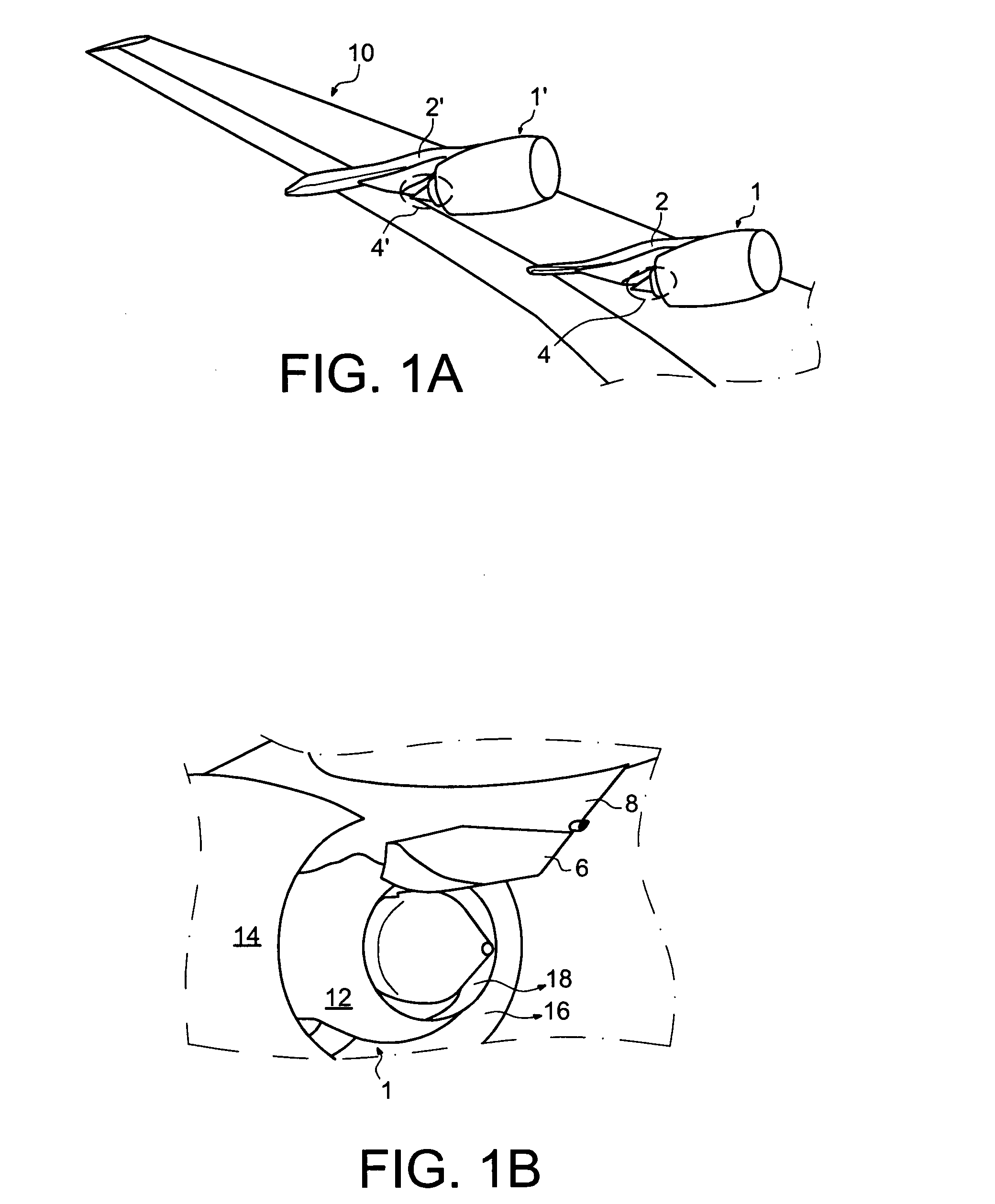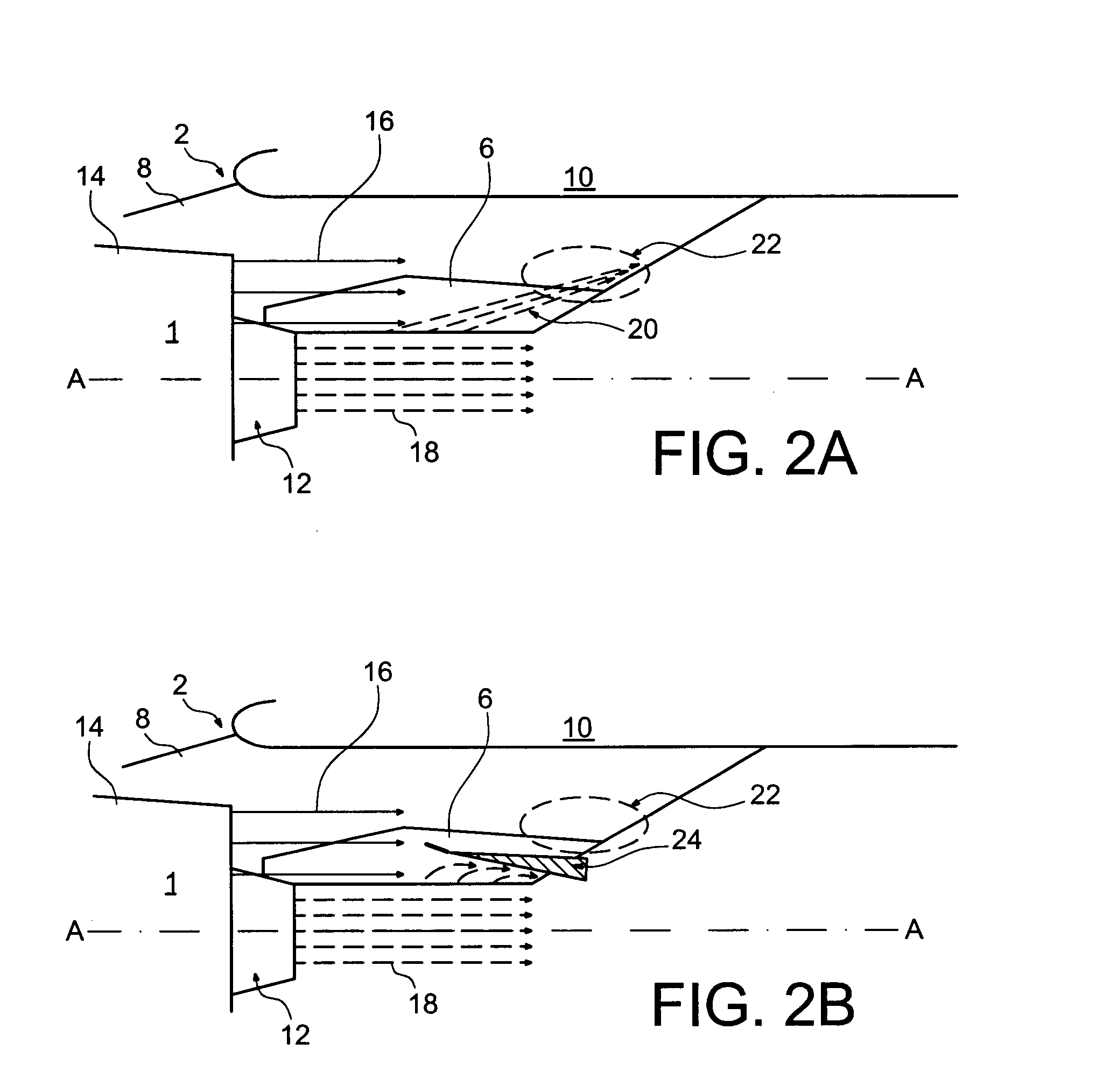Vortex generator at hot gas output
a technology of hot gas and generators, applied in the direction of power plant exhaust arrangements, air-flow influencers, transportation and packaging, etc., can solve the problems of difficult identification, difficult prediction of complex aerodynamic and aerothermic phenomena, and difficult modeling of boundary layers, so as to achieve the effect of heavy aircraft structur
- Summary
- Abstract
- Description
- Claims
- Application Information
AI Technical Summary
Benefits of technology
Problems solved by technology
Method used
Image
Examples
Embodiment Construction
[0028]In aircraft, a usual design provides for an attachment mast in order to form the link interface between the engine such as a jet engine and an airfoil of the aircraft. This type of attachment mast, also called EMS (“Engine Mounting Structure”), makes it possible to suspend for example a jet engine below the airfoil of the aircraft, or to mount the jet engine above the airfoil, using several attachments; it makes it possible to transmit the efforts generated by its associated jet engine to the structure of the aircraft, and also allows for the carrying of fuel, air, electrical and hydraulic systems, etc. between the engine and the aircraft.
[0029]Therefore, as shown in FIGS. 1 and 2, an aircraft engine 1 is fixed under a wing 10 of the aircraft by an attachment mast 2. Jet engine 1 has in front a large-size fan casing that delimits a fan ring channel, and has towards the rear a central case that encloses the core of the jet engine 1; the central case extends towards the rear by ...
PUM
 Login to View More
Login to View More Abstract
Description
Claims
Application Information
 Login to View More
Login to View More - R&D
- Intellectual Property
- Life Sciences
- Materials
- Tech Scout
- Unparalleled Data Quality
- Higher Quality Content
- 60% Fewer Hallucinations
Browse by: Latest US Patents, China's latest patents, Technical Efficacy Thesaurus, Application Domain, Technology Topic, Popular Technical Reports.
© 2025 PatSnap. All rights reserved.Legal|Privacy policy|Modern Slavery Act Transparency Statement|Sitemap|About US| Contact US: help@patsnap.com



